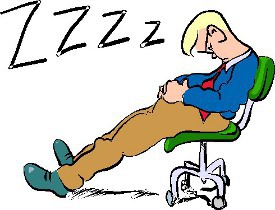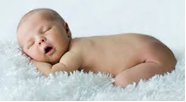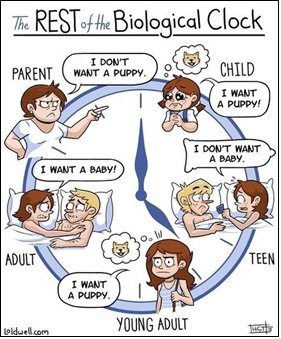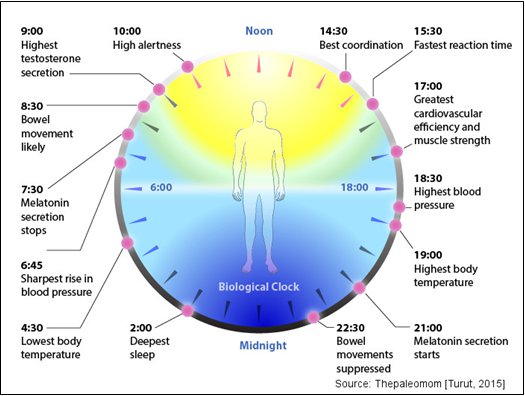By Walter Sorochan
[From book-Whole Body Wellness Chapter 7 ]
Posted Dec 18, 2018; updated October 23, 2021. disclaimer The information presented here is for informative and educational purposes only and is not intended as curative or prescriptive advice. Although the FDA has not approved the information herein, you should work with your informed medical doctor.
Next to getting enough oxygen, water and energy food for survival, the fourth basic immediate need of the body is sleep. Dr. Carl Hunt, the director of the National Center on Sleep Disorders Research in Bethesda, Maryland, points out that " Sleep is a biological need, much like food and water. If totally deprived of shut-eye, humans ultimately perish." Sleep is essential for survival. [23]
Why? Well, one could argue that not enough sleep causes disorientation, lack of coordination, confusion, irritability, delays in healing and slight memory loss. As the long day wears out on a person, the more the body wants to slow down, rest and sleep. Sleep must also be considered an important determiner of health since it is also supported by recent research.
Most of us have been aware, since about 1960, that we have an internal biological clock, the circadian cycle inside our brain, and that it regulates sleep. This sleepy information has been in the back burner until recently and most of us do not pay much attention to sleep. We take sleep for granted and this is a big mistake. Research since 2000 provides evidence that the circadian clock is a major determiner of health and disease! [1] Researcher Turuk elaborates on the new research: [1] [2]
Researchers have discovered over 10 genetic genes that regulate not only the biological clock, but are related to other disease and body genes. Startling research has also found that the molecular clock machinery is actually in all the cells, tissues and organs of the body. Equally surprising were recent discoveries indicating that this cellular circadian clock is regulating the timing over 24 hours of somewhere between 10-30%, and perhaps up to 50%, of all the expressed genes in a particular tissue or organ. The implication of this discovery is that the circadian body clock may be involved in contributing to many chronic disorders and diseases, like diabetes, cancer, heart disease, hypertension, depression, obesity and so on. Sleep regulation is obviously a small but important part of the biological clock. [1]
Humans are also “temporally organized,” and a breakdown of that temporal organization, maybe only in a particular organ [lung, breast, liver or pancreas, for example], could lead to disease in that particular tissue, even if all the other parts of the body have clocks running normally.
Much of the body's biological rhythms--when to eat, when to sleep, etc.-- are set by a 24-hour circadian clock, a biological timing system linked to sunlight or to the rising and setting of the sun. The system relies on several "clock controlled genes" but one in particular seems to be a primary driver of the circadian machinery. The gene was discovered in 1997 by neurobiologists Fred Turek and Joseph Takahashi of Northwestern University in Evanston, Illinois. [2]
Your body sends protective signals that you need to sleep and rest. Ignoring such signals can disrupt the body clocks and eventually incubate diseases.
Setting aside the new information about the importance of sleep and biological clocks, lets get acquainted with sleep.
 Although sleep is essential for rest and feeling refreshed, it is also one of the most ignored essentials of wellbeing. From an everyday point of living, we either ignore sleep, really do not understand sleep or assume we are getting enough sleep when we are not. Many humans often have two important problems. One is not getting enough sleep and the other is insomnia or not being able to fall asleep. Both sleep problems can disrupt one's ability to function in life.
Although sleep is essential for rest and feeling refreshed, it is also one of the most ignored essentials of wellbeing. From an everyday point of living, we either ignore sleep, really do not understand sleep or assume we are getting enough sleep when we are not. Many humans often have two important problems. One is not getting enough sleep and the other is insomnia or not being able to fall asleep. Both sleep problems can disrupt one's ability to function in life.
A lot of good things happen when you get adequate sleep. The brain re-charges, the stomach empties, the body repairs and heals. You feel refreshed! Think of sleep as your body's medicine!
 Ever wonder why babies sleep so much? Why two and four year olds fall asleep in the middle of the day. Or why seniors snooze in the late afternoon?
Ever wonder why babies sleep so much? Why two and four year olds fall asleep in the middle of the day. Or why seniors snooze in the late afternoon?
Well, what does research say about sleep?
Sleep is regulated by a gland the size of a single grain of rice in the brain. Ancients called it the “Third Eye” because it was related to sunlight and today it is referred to as the pineal gland. Although the pineal gland’s full purpose is still a mystery we still know very little about it and we pay no attention to it, research about sleep has exploded in the past 30 years.
Although it is a mystery gland, it’s hormone, MELAtonin, acting as a hypnotic, has been used for Alzheimer’s disease or memory loss [dementia], bipolar disorder, a lung disease called chronic obstructive pulmonary disease (COPD), and cancers. There isn’t enough research evidence to know if there is a real link between the pineal gland and these disorders. In spite of a lack of good research on these links, this gland is very important to the role of sleep and insomnia. It is a time-keeper of many body functions. The pineal gland secretes MELAtonin which is different from the melatonin made by the skin cells in the synthesis of hormone D.
The biological Clock:
Like all living plants and animals, humans have rhythms of life that are instigated from the sun and the earth spinning around its axis every 24 hours. We are not aware of the need for sun energy as it is part of our natural biological makeup. Indeed, Vitaterna and her associates at Northwestern University, Evanston, Illinois, point out that we live in a rhythmic cycle of day and night that, in turn, is a daily response to the 24-hour changes in the physical environment imposed by the earth turning on its axis. [4]
 It should be pointed out that there are two types of biological clocks. One is the “master” or biological clock that regulates maturity development like awareness and readiness in early childhood to learn to talk, have growth spurts, menstruation, readiness to have children [illustration on right] , and body aging. Much of our behavior is linked to sunlight [light - darkness], as when children have growth spurts, how we feel and the health problems we have when we do not get enough exposure to sunlight.
It should be pointed out that there are two types of biological clocks. One is the “master” or biological clock that regulates maturity development like awareness and readiness in early childhood to learn to talk, have growth spurts, menstruation, readiness to have children [illustration on right] , and body aging. Much of our behavior is linked to sunlight [light - darkness], as when children have growth spurts, how we feel and the health problems we have when we do not get enough exposure to sunlight.
The other clock is the circadian or sleep rhythm clock that is discussed in this chapter. Sleep is regulated by the circadian rhythm of the body. Circadian rhythms are physical, mental and behavioral changes that follow a roughly 24-hour cycle, responding primarily to light and darkness in our environment. These rhythms have the flexibility or 'temporal' structure that enables us to change our behavior in relation to the time of day, month or year. These are reset at sunrise and sunset each day. Such an ability makes our body a precise but flexible bio-chemical machine. [7]
Physiology of Circadian rhythm: [6] [7] [8] [9] Daylight and darkness help dictate your circadian rhythm. Light exposure stops the release of pineal gland hormone METAtonin [ different from the skin melatonin ], and in turn, this helps to control your circadian rhythms. The sun’s rays pass into the eye and are transported to the Suprachiasmatic Nucleus [SCN], a tiny region of the brain in the Hypothalamus, and from there to the pineal gland in the center of the brain. This Is the Master Circadian Clock.
The SCN is also a seasonal clock that measures the length of daylight. The human brain keeps track of the seasons using the same nucleus of neurons that govern Circadian rhythms.
The SCN takes the information on the length of day and night from the retina, interprets it, and passes it on to the third eye, the pineal gland, in response to these signals from the SCN. The pineal gland secretes the hormone METAtonin, a derivative of serotonin, which generally contributes to feelings of well-being and happiness. This gland is connected to the brain center that controls emotion, behavior, motivation, long-term memory and sense of smell.

Above is an illustration of how the Day [circadian] clock may work in a day.
MELAtonin is produced in response to another hormone called norepinephrine. Recent research shows that while the norepinephrine complex turns up MELAtonin in the evening [resulting in sleepiness], dopamine and its receptor form a complex of proteins that does the opposite in the morning. The dopamine receptor on the outside of the pineal gland works alongside norepinephrine receptors to slow the MELAtonin-secretion signal in the early morning. Several diseases and conditions are affiliated with METAtonin, including insomnia, fatigue, anxiety and, most recently, cancer. Since MELAtonin protects white blood cells against radiation damage, they provide a boost for the immune system. [7]
The pineal gland also has an effect on our reproductive system. High levels of MELAtonin in children are thought to inhibit their sexual development, and pineal gland tumors have been linked to the onset of early puberty. In addition, when the gland is damaged, accelerated growth of sexual organs occurs. [7]
Dr. Rick Strassman, who conducted extensive research on near-death experiences in the 1990s, asserts that the pineal gland is also responsible for secreting the naturally occurring psychedelic hormone dimethyltryptamine [DMT]. Structurally analogous to both serotonin and MELAtonin, it is believed DMT might help contribute to the visual effects of natural dreaming, near-death experiences, religious visions or other altered states. [7]
Functions of the pineal gland: [3] [5] [11] [12]
Genes And Sleep patterns change as we age. As people age, the amount of sleep changes with age. This may explain why babies fall asleep at all hours of the day and older people tend to wake up early in the morning, have short bouts of afternoon snooze, fall asleep earlier in the evening and also why they may not be able to nap in the early part of the day.
We all have a set of so-called clock genes that keep us on a 24-hour cycle. In the morning they wind us up, and at night they help us wind down. The genes are the master controllers of a bunch of other genes that control processes like metabolism to sleep. When you woke up this morning, the timekeeping genes told a gland in your brain to give a jolt of the stress hormone cortisol to wake up. Tonight, they'll tell the gland to spit out melatonin, a hypnotic hormone that makes you sleepy.
Colleen McClung, a neuroscientist at the University of Pittsburgh Medical Center, and her associates, published a study in 2015, found that genes beat to a different rhythm in older folks. As people get older, they tend to have a loss of rhythmicity in a number of these core clock genes. It's likely throwing their sleep timing out of whack.
But they also found something else: another set of genes that seemed to pick up a rhythm, but only in older brains. That second set of genes, McClung speculates, might be working like a backup clock that starts ticking when the main one becomes exhausted or less reliable.
Humans have the capacity to override their internal biological clock and rhythmic patterns.
Afternoon nap and sleep debt: Ever wonder why persons of all ages often take a short snooze or sleep in the afternoon? It may be that the brain is tired and when worn-out, and automatically shuts down into a short recovery sleep. The short sleep is a form of brain recharge! Another way of interpreting the need for a nap is when a person did not get enough sleep previously, then this becomes a sleep debt. It is like charging a purchase on a credit card as a debt. Similarly, when the money credit card has maxed out the credit card stops working. Taking a short snooze in the afternoon is a way of paying off part of the sleep debt so your brain can start working again.
However, sleep disturbances in the elderly can often be caused by the physical problems that go along with growing old and the resulting pain and discomfort, which awakens them several times during the night. Falling asleep for 5 - 10 - 30 minutes in the late afternoon is an essential body need to sleep and recharges the brain. This is a small and insignificant but important body thing that becomes important in our mysterious lives. Most of the body is programmed as afternoon sleep may be, so it is best to give the body the afternoon snooze it needs.
Disorders resulting from pineal gland dysfunction: The pineal gland can become calcified from too much calcium intake or from chlorine in drinking water, and tends to lose its ability to regulate the nervous system and sleep in old persons.
Hardeman reports the following health problems related to pineal gland dysfunction: [7] [13]
Not enough sleep [deprivation or debt] is associated with many disorders: [8] [14] [16] [17] [18] [24]
Prevention: Can’t Fall Asleep? Can’t Stay Asleep? Is Your Biological Clock Out of Control? What to do?
Lifestyle Solution: Reset Your Body’s Biological Clock
Adults need about 8 hours of sleep a night to function at their best and stay healthy. Now, however, the average American sleeps only 6.9 hours per night. Not enough sleep makes us less alert by causing injuries to occur more easily and take the body longer to heal. Adolescents need at least 9 hours of sleep. [20]
What sleep does for you:
Prevention:
The implication from the limited research about the body biological clock, circadian rhythm and pineal gland, is that you can do a lot of things to prevent many body disorders. Most important, you need to address the cause of your sleeping problem; and not suppress it with sleeping pills, or drug/alcohol abuse. Here is a do list:
- 1. Stop taking sleeping pills.
- 2. Get at least 15 to 30 minutes of sunlight each day on half of your upper body. Direct or indirect light is the primary stimulus for regulating circadian rhythms, seasonal cycles, and neuroendocrine responses in humans. [4] Look toward the sun but not directly at the sun.
- 3. Get about 8 to 9 hours of sleep every night.
- 4. Sleep in a dark room
- 5. Drink 5 to 8 glasses of water that is not fluoridated nor chlorinated. Fluoride and calcium excess can accumulate and calcify the pineal gland, blocking its effectiveness, and these deposits can get worse as we age. [6]
- 6. Avoid using fluoride toothpaste.
- 7. Get hormone D synthesized by sun exposure for 20 to 30 minutes of sunlight 3 to 4 times a week, depending on your skin color.
- 8. Avoid ingesting too much calcium [and ignoring magnesium and other co-factors] from all sources that calcifies the pineal gland. Blocked pineal gland could lead to things like trouble sleeping or weight gain. One study even suggests toxic calcification could lead to early onset of puberty in girls. [3] [11]
- 9. Balance the Ca:Mg ratio = Approximately 2:1. If you ingest calcium you need to balance it with magnesium.
- 10. Eat a whole-food complex diet.
- 11. Exercise at least 3 times a week. Body motion moves the toxins out of your body.
- 12. Avoid wearing sunglasses all the time, as these block the essential sunlight needed for the pineal gland to activate the circadian rhythm.
- 13. Play and work in the sunlight as much as you can.
- 14. Infants’ frequent napping plays an essential role in establishing long-term memory. [15]
- 15. Stop drinking caffeine coffee and soft drinks as these prevent you from sleeping.
- 16. Lose body weight if you are obese or over-weight. [16]
Furthermore, clinical studies have demonstrated that light therapy is effective for treating selected affective disorders, sleep problems, and circadian disruptions. [3] [11]
"Treat getting adequate sleep as a top priority in your life – do not “cheat” on sleep. And if you are having trouble sleeping, perhaps due to your condition, tell your doctor about your sleep problem, and seek ways to remove that problem from your life." [1]
You need to take charge of your sleep problem. Make changes to your lifestyle behaviors like spending time in the sunshine each day, drink no coffee at least 6 hours before bedtime and go to bed early so you can get at least 8 to 9 hours of sleep. Fix your broken body clock and become a three eye genius.
References:
1 Patientslikeme, "We have become 24/7 creatures in a 24/7 society": an interview on sleep with Fred W. Turuk, Ph.D.," The value of Openness. May 20, 2015. Patientslikeme: people patients 2015
2 Turek Fred W., "Circadian rhythms: from the bench to the bedside and falling asleep," SLEEP 2004;27(8):1600-2. Article Tirek: Circadian rhythms is no longer active. 2004
3 Dr. Edward Group, “How Fluoride Damages Pineal Gland Health,” Global Healing Center, November 16, 2015. Edward Group: Fluoride danger 2015
4 Vitaterna Martha Hotz, Joseph S. Takahashi, and Fred W. Turek, “Overview of Circadian Rhythms,” National Institutes of Health. Vitaterna: Circadian Rhythms
5 Sargis Robert M., “An Overview of the Pineal Gland Maintaining Circadian Rhythym,” EndocrineWeb, June, 2014. Artivle Sargis: Pineal gland is no longer active.
6 Brainard George C., et la., “Action Spectrum for Melatonin Regulation in Humans: Evidence for a Novel Circadian Photoreceptor,” The Journal of Neuroscience, August 15, 2001, 21(16):6405–6412. Brainard: Bain Circadian 2001
7 Keller Britt, “The pineal gland - Alink to our third eye,” Brain World, September 09, 2012. Keller: Pineal gland 2012
8 Lake James, “Treating Insomnia Without Using Prescription Medications,” Psychology Today, January 02, 2017. Lake: Treating Insomnia Without Using Prescription Medications 2017
9 Bailey Regina, “Pineal gland,” About Education, January 27, 2016. Article Bailey: Pineal gland is no longer active.
10 Eagleman David, “10 Unsolved Mysteries Of The Brain,” Discover, July 31, 2007. Eagelman: Brain mysteries 2007
11 Macchi MM1, Bruce JN., “Human pineal physiology and functional significance of melatonin,” Front Neuroendocrinol. 2004 Sep-Dec;25(3-4):177-95. Macchi:: Pineal functioning 2004
12 Wikipedia, “Melatonin.” Wiki: METAtonon
13 Hardeland Rudiger, “Chronobiology of Melatonin beyond the Feedback to the Suprachiasmatic Nucleus-Consequences to Melatonin Dysfunction. Int J Mol Sci. 2013 Mar 12;14(3):5817-41. Hardeland: Pineal METAtonon 2013
14 Kolla Bp and Auger RR, “ Jet lag and shift work sleep disorders: how to help reset the internal clock,” Cleve Clin J Med. 2011 October; 78(10):675-84. Kolla:disorders internal clock 2011
15 Hupbach Almut , Rebecca L. Gomez, Richard R. Bootzin and Lynn Nadel, “Nap-dependent learning in infants,” Developmental Science 12:6 (2009), pp 1007–1012. Hupbach: Learning in infants 2009
16 Wilborn Colin and others, “Obesity: Prevalence, Theories, Medical Consequences, Management, and Research Directions,” J Int Soc Sports Nutr. 2005; 2(2): 4–31. Wilborn: Obesity & sleep 2005
17 Brunello Nicoletta.; Armitage R., Feinberg I., ET AL. "Depression and sleep disorders: Clinical relevance, economic burden and pharmacological treatment," Neuropsychobiology 42:107-119, 2000. Brunell: Sleep disorderes & pineal 2000
18 Chi-Hang Lee and others, "Excessive Daytime Sleepiness is Associated with Longer Culprit Lesion and Adverse Outcomes in Patients with Coronary Artery Disease," Journal of Clinical Sleep Medicine, 2013, vol 9,No 12, 1267-1272, Article Chi-Hang: Lack sleep consequences is no longer active.
19 Stickgold R, “Sleep-dependent memory onsolidation,” Nature, 2005, 437 (7063): 1272–8. Stickgold: Sleep 2005
20 Naska A, Oikonomou E, Trichopoulou A, Psaltopoulou T, Trichopoulos D “Siesta in healthy adults and coronary mortality in the general population”. Archives of Internal Medicine, 2007, 167 (3): 296–301. Naska: Sleep & coronary mortality2007
21 Prodromos Chadwick, “The no pills, no pain program,” Illinois Sports medicine and Orthopeaedic Centers. Prodromos: No pain program
22 Gominak Stasha, "Using vitamin D and the B vitamins to improve your health," Vitamin D Hormone, January 2016. Article Gominak: Vits D & B to improve health is no longer active.
23 Lovgren Stefan, " U.S. Racking Up Huge "Sleep Debt," National Geographic News, February 24, 2005. Article Lovegren: Sleep debt is no longer active.
24 Alhola Paula and Paivi Polo-Kantola, "Sleep deprivation: Impact on cognitive performance," Neuropsyciatr Dis Treat, October 3 2007, (5) 553-567. Alhola: Sleep deprevation 2007